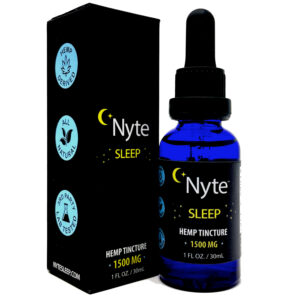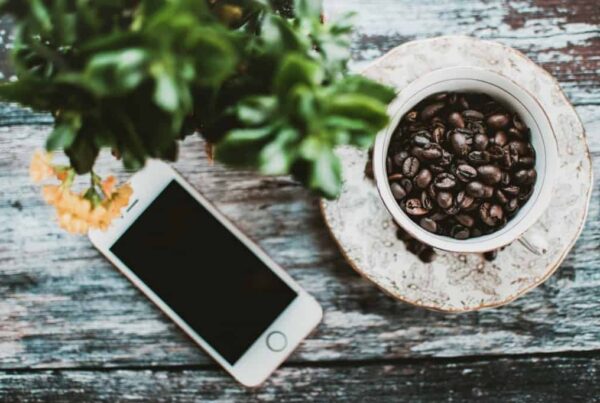Your Power Down Hour Routine
How long does it take you to fall asleep? If it’s longer than 25 minutes, it could be that your nightly routine isn’t conducive to falling asleep easily. On average, it should take a person about 15-25 minutes to fall asleep each night. In fact, falling asleep sooner than 15 minutes can actually indicate that you’re sleep-deprived, so if you pass out as soon as you hit the pillow, that’s not necessarily ideal.
If it’s taking too long to fall asleep at night, then it might be time to make some dramatic changes to that last hour before going to bed. We like to call this the Power Down Hour, and there’s actually a science to restructuring that final hour to support more predictable achievable sleep.
Maximizing Your Evening Routine
The Power Down Hour is all about maximizing that last hour before bedtime, using scientifically proven methods to get the mind and body prepared for falling asleep. It involves a structured routine that involves relaxation techniques and other methods to signal to your body’s nervous system that it’s time to shut things down.
Blue Light: Melatonin’s #1 Enemy
Before we go over what the Power Down Hour entails, we want to quickly talk about blue light. Blue light is a light frequency emitted from your devices that you use daily, including both your laptop and your smartphone. We may not realize it consciously, but blue light actually signals wakefulness when perceived by the brain. That’s because it interacts with the eye’s melanopsin cells, and this tells the brain to stop producing melatonin, the essential hormone that balances our natural circadian rhythm.
Think about how our ancestors experienced light throughout every 24-hour cycle. When the sun is shining, that light is telling our brain to be awake, alert and active. At night, when it gets dark, our melatonin levels rise because the light is no longer signaling to keep us awake.
Blue light is a modern invention that completely throws off our innate sleep cycle, which is why using devices late at night can be incredibly disruptive to our sleep. But, luckily, there are blue light glasses, which block blue light from your vision. So, wear blue light glasses for that last hour to make sure that the frequency isn’t disrupting your sleep. Also, if you’re using a laptop, you can install the Flux app, which automatically turns off the blue light emitted from the screen.
Now, let’s walk you through the Power Down Hour, which is broken into 3 20-minute sections.
#1: First 20 Minutes
For the first 20 minutes of the Power Down Hour, you’ll want to tie up any loose ends from the day and prepare some basic things for the morning, such as the clothes you’re going to wear, or your kids’ lunches. This is a great way to get rid of some of that anxiety that we have when going to bed, when we think about all of the little tasks that we’re going to need to squeeze into the morning while rushing around preparing for work. Going to bed feeling more prepared for the day ahead can do wonders for our mind’s ability to shut off at night.
#2: Second 20 Minutes
For the second 20 minutes, you’ll want to go about your hygiene routine – brushing your teeth, washing your face, putting on your pajamas, etc. This can actually be quite meditative, and consistently sticking to the same hygiene routine gest your body used to winding down at a certain time each night.
In fact, this 20-minute period is a great time to take a hot bath. We already know that a bath can be extremely relaxing, and even give you an opportunity to meditatively reflect on some mental loose ends rather than taking them with you to bed. But, there’s actually a scientific benefit to bathing before bedtime, as well. We know that when we raise our core temperature, such as we do when soaking in warm water, there’s a cooling effect that takes place afterward. This cooling effect has been proven to increase melatonin levels, which can help your body get more prepared for sleep.
#3: Third 20 Minutes
Now, we get to the final 20 minutes of our Power Down Hour, and this is the period when you should be doing whatever is most relaxing to you, whether that be meditating, praying, reading scripture or just focusing on your breathing. This helps bridge the gap between wakefulness and sleep, and, is a time to avoid doing anything mentally stimulating. We urge you to not use your devices at all during this last 20 minutes.
One of the best relaxation techniques is known as 4-7-8 breathing, which was developed by Navy Seals – in particular, snipers, to keep their heartrate low and stable to enhance their ability to shoot their targets. This breathing technique is simple: inhale for 4 seconds, hold for 7 seconds and exhale for 8. By exhaling more than you inhale, you’re clearing the body of carbon dioxide, which has a slowing effect on the nervous system. This breathing pattern also mimics the way we breathe when we sleep, and lowers our heartrate to about 60, which is about where our heartrate is once we’ve entered a sleep state.
Helpful Tips for Power Down Hour
- Delegate Your Tasks: You know those annoying tasks that you need to do late at night before you can relax? Well, try delegating them to someone else. Ask your spouse to empty the dishwasher, or possibly ask your kids to take the garbage cans to the curb.
- Share with Your Partner: Once you decide to make the Power Down Hour part of your nightly routine, make sure that your partner is on board with you. Even if they don’t want to join you, they can do what they can to support you during that final hour before bedtime.
- Be Consistent: You should follow the same Power Down Hour every night of the week, including on the weekends. The key is training your brain to wind down in the exact same way each and every night.
- Set an Alarm Clock: You’ll likely have the most success employing Power Down Hour when you set an alarm clock for 1 hour before your bedtime. This way, you’ll be able to fully commit to the entire routine.
Don’t Forget to Use Your Sleep Tracker!
The Power Down Hour technique can make a dramatic difference in how your body and mind get ready for sleep. Try it out, and don’t forget to monitor your progress in your sleep tracker to start recording the results from this change in routine. Also, make sure you’re using either a Nyte™ Sleep Tincture or Nyte™ Sleep Gummies.







